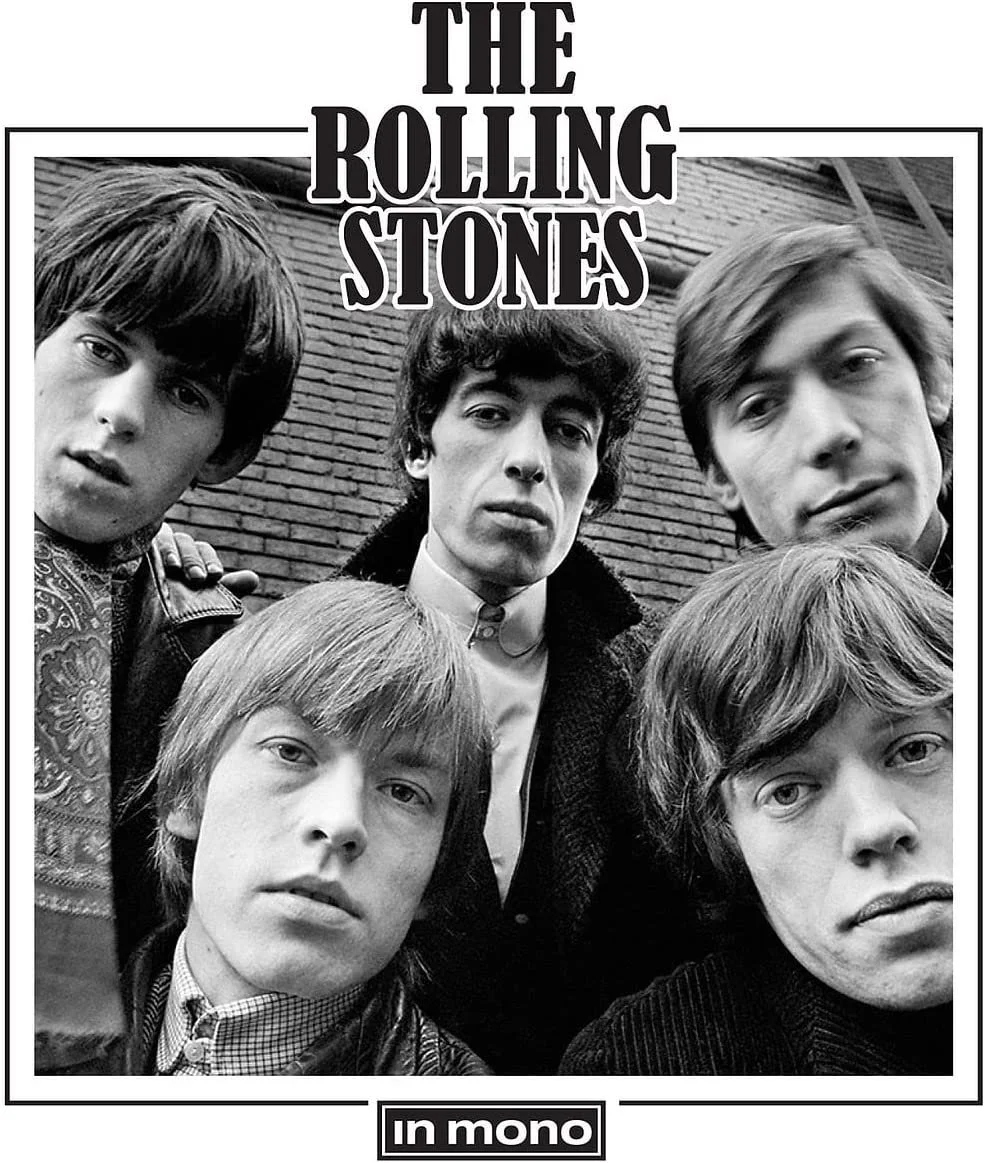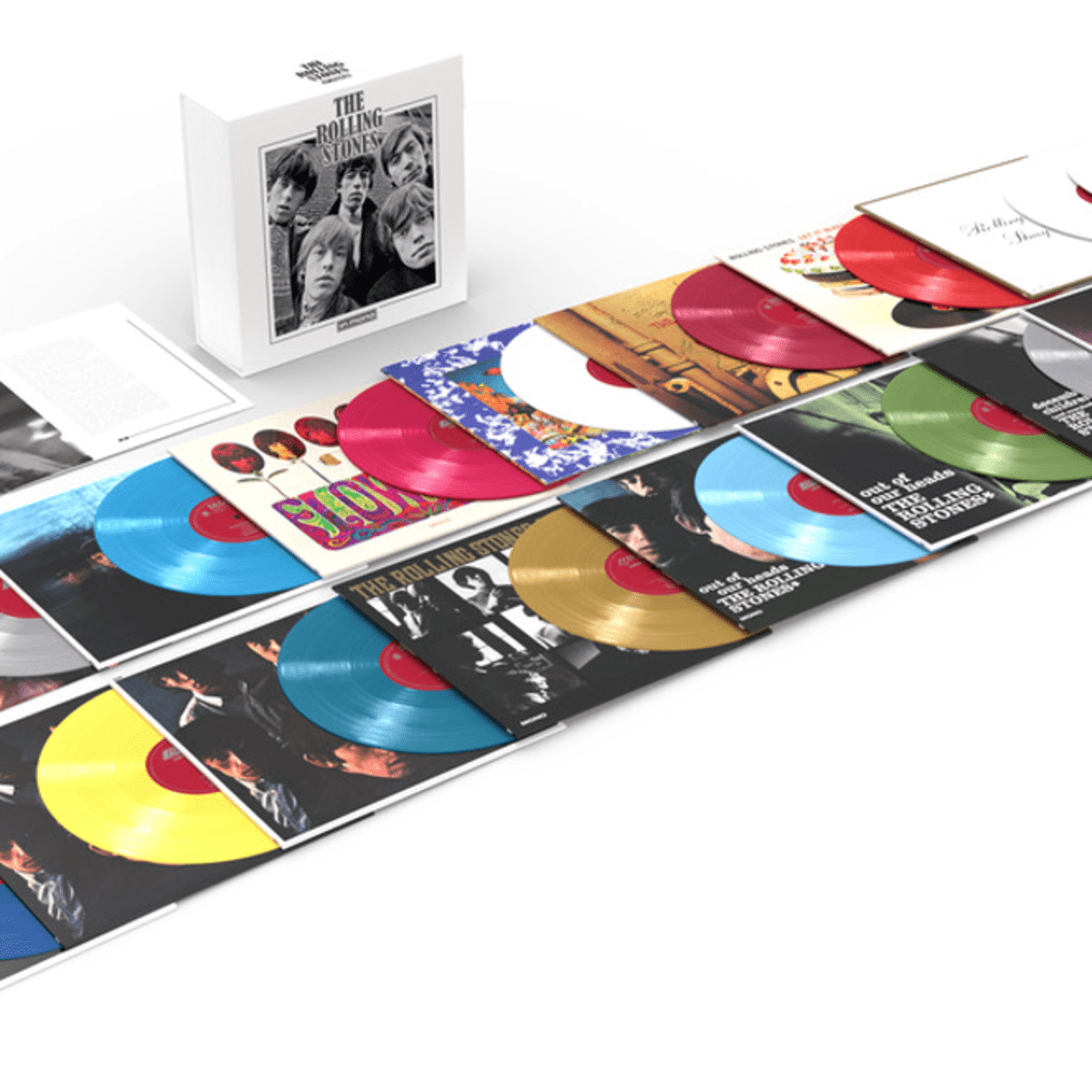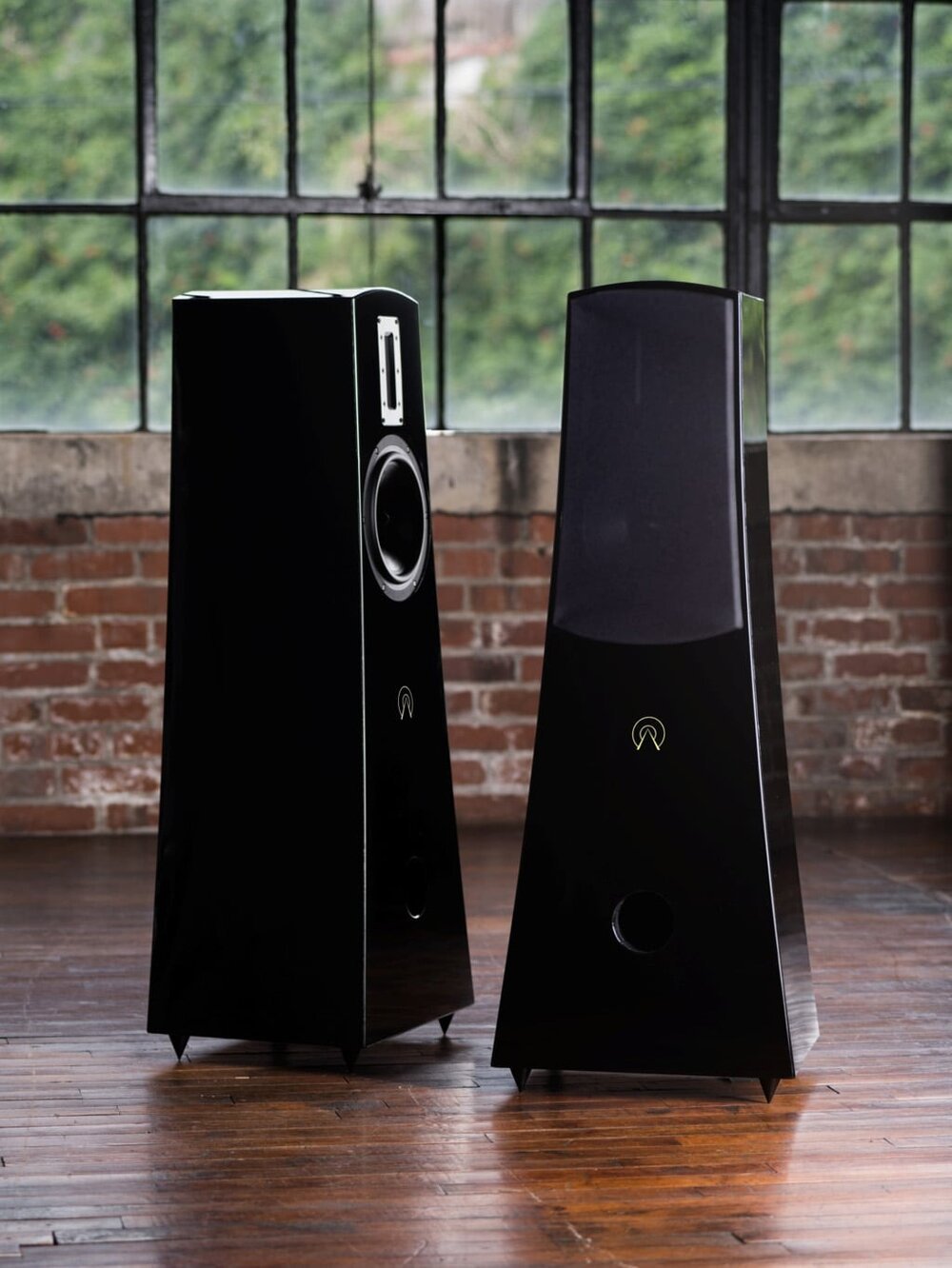The Rolling Stones in Mono (2023 Coloured Vinyl release)
This review is of the 10,000 limited edition 2023 Abkco box set of The Rolling Stones in Mono pressed on coloured vinyl, not the 2016 release of the same material on carbon black vinyl.
Since the recordings are identical, you’d think the two box sets would be equal. This is where cutting, pressing and vinyl quality affect LPs.
Exactly like the sold-out (and now commanding big bucks) 2016 set, the new set is mastered by Bob Ludwig and the lacquer was cut at Abbey Road. The set is cut from DSDs from the original analog tapes, which by all reckoning, were in very rough shape. Unlike the years of MoFi DSD obfuscation, full transparency on this $430 box. More on the sound below.
My set has some pressing/QC issues. Nothing to detract from my enjoyment. As for sound, no less than our own Michael Johnson says he heard no differences in sound between the 2016 set at his mom’s house (hip mom) and his 2023 box. I’ve never heard the 2016, but I always take my Audiophilia colleague’s audio and musical word to the bank.
The pressing is from GZ Media, the largest record manufacturer in the world.
Many have complained about the jacket quality and production values compared to The Beatles in Mono. We get a booklet compared to the quality, hardcover book in The Beatles In Mono. The Stones’ jackets are not as good, but they look good enough to me. Mind you, I’m not into the crazy collector, colour grade, 1950’s industrial printing, inner sleeve accuracy, Tip-on quality type of lunacy. These covers look and feel good. What does not feel good is the quality of the paper inner sleeve (discarded and replaced with Nagaoka Polyethylene inner sleeves as soon as the LPs were cleaned), the plasticky outer covers (replaced with MoFi Original Master Sleeves), the inaccurately-sized spindle holes (each needed a gentle file), and the warped vinyl (5 out of 16 records). Happily, my amazing Pure Fidelity Harmony Turntable with very heavy PF record weight, Acoustic Signature TA-1000 tone arm and Infinity Monaural Cartridge rode the undulations with zero problems or negative artifacts.
I’m new to the Rolling Stones. As in, unless a cursory listen to “Paint it Black” or “Satisfaction”, I’ve never heard an album. Of course, I knew of the love, admiration and almost cult-like following they’ve had since the early ‘60s. And hearing these wonderful albums, the group’s energy, passion and dedication jumps from the vinyl. Listening was very enjoyable, but I couldn’t help feeling like I was late to a cool party. By 50 years!
Better late than never.
All 14 albums brought great pleasure, and as a musician and audiophile, I very much enjoyed the band’s progress over the seven years spanning these albums (I didn’t listen to the 24 cuts—mostly released as singles—on the Stray Cats bonus double album). The recording got better, singing improved, and playing and songwriting more accomplished. But there was a special pleasure listening to their first album, The Rolling Stones (UK 1964), with all the ingenue energy, Jagger’s cockiness and confidence, and the guys having fun backing him up.
By The Rolling Stones, Now! (US 1965), Jagger was even more confident after a year of touring, recording, and under the leadership of their innovative manager Andrew Loog Oldham. Jagger was on full swagger. Of course, he never looked back.
And when we get to 1965’s December’s Children (and everybody’s), the singing and arranging are getting even more creative and sophisticated. Listen to arranger Mike Leander’s gorgeous string ritornello in “As Tears Go By” (Jagger/Richards). He was good enough to arrange for The Beatles when George Martin was unavailable.
From my very limited knowledge of The Rolling Stones, I heard in desultory terms they were nothing more than a blues band with an attitude. Wrong! Jagger and band mate at the time Brian Jones could be considered blues scholars, studying, emulating, listening and discussing sometimes all night, to perfect their sound and influences. From the first records, their blues credentials were cemented with perfect interjections from Keith Richard’s guitar and the solid drumming of Charlie Watts. And unlike journeyman blues players, the Stones made the fairly simple 12 bar, I, IV, V, I harmony never sound inevitable. Of course, they morphed into far more than a blues band and became “The World’s Greatest Rock and Roll Band”.
The Sound
Having never heard the 2016 set or even a single original either mono or stereo, UK or US pressing, my lens is through this 2023 release alone.
Partly recorded by the great Beatles and Led Zeppelin engineer Glyn Johns, and spread across studios from London to Hollywood, the recordings begin with a typical canned, high-energy sound that is never less than fun and graduate slowly to a much more sophisticated, layered presentation. Listen to the opening of the UK version of Out of Our Heads (1965) track “That’s How Strong My Love Is” to hear beautifully recorded guitars and bass—an audiophile dream sound. And digitally sourced, no less! Vocals become richer, instrumental solos better constructed and all recorded with more flesh on the bone. No matter the record lineage, Jagger’s voice is always perfect in the mix and the lyrics and “arrogance” are heard and felt clearly.
By the time we arrive at the US 1965 release Out of Our Heads the Jagger/Richards songwriting team is hitting its stride with “Satisfaction” and “Play with Fire”. Followed immediately by one of the pair’s pure blues specials “The Spider and the Fly” (She was common, flirty, she looked about 30).
The recording makes clear the far more advanced orchestration of Aftermath (UK & US 1966), with varying styles and accompanying instruments such as the sitar, koto, and dulcimer. Jagger’s singing becomes more personalized and reflective on the very beautiful “Lady Jane”. Many Stones scholars believe this album is the tipping point changing the band’s trajectory equal to The Beatles.
When we get to 1967’s Flowers, a compilation album featuring songs like “Ruby Tuesday” with recorder solos (by Brian Jones) and other acoustic instrumental cues, we get the full-on Stones’ dabbling in “Baroque Pop”. More a fad than a fulsome influence, what songs did emulate the 17th-century style were fun and well-intentioned rather than quality Stones. Later, with the hit “Let’s Spend the Night Together”, we’re back with Jagger’s energy and the cohesion of the band’s rock sensibilities.
By the time we get to the rudderless (their longtime manager had quit), fairly chaotic Their Satanic Majesties Request (1967), the recorded sound is becoming more coherent and sophisticated dealing with all the new instruments and the sounds the band was using. So, psychedelic music, yes, but also focused on audiophile-quality recording. Interestingly, Brian Jones's talent as a multi-instrumentalist is highlighted: dulcimer, recorder, mellotron and some pretty serious overblown harmonic flute playing. Even Zeppelin’s John Paul Jones added a string arrangement.
Brian Jones left the band in 1968 and a year later was dead at age 27!
Jones did participate in both the Beggars Banquet (included here with the original “toilet cover”) and the final Let it Bleed, albeit sporadically. By this time, his drug habit and emotional problems became too troublesome for the recording sessions. Glyn Johns, suggests that both these last albums from this era of the Stones were the coming of age for the group, “…signalled The Rolling Stones' coming of age. ... I think that the material was far better than anything they'd ever done before. The whole mood of the record was far stronger to me musically.” As such, when Jones did finally come into work, Johns would isolate him in a booth, let him play what he liked, and never include the recording in the mix. Exasperated, both Jagger and Richards told Johns to “Just tell him to piss off and get the hell out of here!”.
These last two are two fantastic albums with diverse, brilliant material. Some suggest the original stereo mix folded down to mono is not good. I think it sounds great and even adds a little bloom to the previous close mic recordings. Beggars Banquet was the debut of the band’s new producer, Jimmy Miller.
Buy?
This set works out to about $28 an album, a veritable bargain when considering the remastering quality, it’s value as a historic document, never mind its value in a year or two when it’s out of print.
There was much teeth gnashing when audiophiles and collectors didn’t pull the trigger on The Beatles in Mono; the same for the 2016 version of this set. Don’t let FOMO pull the trigger (it’s still available as of writing—I got mine from Amazon in two days—no affiliation), if you have the dough, invest in this magnificent box set just because. You won’t regret it. If you miss it like those other sets, you may be very disappointed. Highly recommended.





